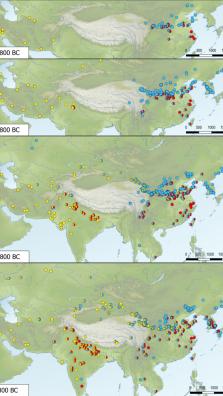The Transition to Agriculture in the Japanese Archipelago

Evidence for agriculturalists first appear in Northern Kyushu west Japan in the Yayoi period around 1200-950 BCE and spread throughout most of mainland Japan, except Hokkaido, by the Late Yayoi (1-250 CE). The origins of these first agriculturalists and their genetic and linguistic impact on today’s Japanese population presents many unresolved issues. These include the extent of indigenous adoption of agriculture by preceding Jomon peoples, compared to the spread of millet farmers and later rice agriculturalists from China.
This lecture lays out archaeological evidence for a complex scenario of developments. Recent evidence shows the Jomon of Japan were not exclusively hunter-gather-fishers, but cultivated azuki and soybean from at least 4000 BCE. Broomcorn and foxtail millets were cultivated between 8000-4000 BCE in northern China. But foxtail millet and domesticated pig likely have a narrower origin within the middle Yellow River. This earliest form of millet agriculture reached Korea (Chulmun Culture) and the Siberian Primorye by 3500 BCE. However, this initial agricultural expansion created limited demographic growth and Chulmun agriculturalists did not diffuse to Japan. Rice cultivation began in the Lower Yangtze and Middle to Lower Huai around 8-9 thousand years ago, with domestication around 4000 BCE. Following the collapse of the Liangzhu Culture (3300-2300 BCE) rice agriculture expanded north to Shandong in the Late Longshan (2600-2000 BC) to Yueshi Cultural periods (1900-1500 BCE) and to the Liaodong Peninsula from the Upper Xiaozhushan (2800-2100 BC) to Shuangtouzi (2100-1100 BCE). It is with these Chinese rice cultures that the Bronze Age Mumun Culture of Korea (1500-300 BC) originates and fueled demographic expansion of rice agriculturalists to Japan. The challenge is then establishing the relative cultural, agricultural, genetic and linguistic contribution of these various cultures to the Japanese Yayoi and subsequent Kofun peoples.
Organizer and contact: Guillaume Jacques (CRLAO, CNRS-EPHE-Inalco): View e-mail